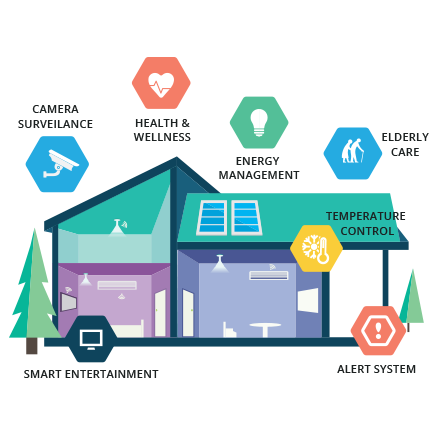Healthcare sector stakeholders across the world are looking for innovative and cost-effective solutions to deliver technology enabled “smart” health care to patients, both, inside and outside the boundaries of the hospital. Public and private hospitals and healthcare systems have been facing serious revenue strains and declining margins for years.
Smart Health Care

What the healthcare industry is ultimately lacking is a strategic move. From the focusing of volume to that of value. A successful transition to value-based care requires stakeholders to move away from transaction-based treatment and towards the holistic health care of the general public. Companies in this industry should concentrate on extending their focus beyond pricing to creating customer-centred relationships. Healthcare providers are looking at new ways of deploying innovative health-care delivery models based on data and analytics.
Exponential technologies in today’s world are driving less expensive, more accessible, and more efficient care delivery to patients on a global scale. With digitizing at the heart of healthcare systems (after complying with all medical regulations), patients can have instant access to medical advice from the top doctors in the industry.
Here is an example of an innovative company, Doctor on Demand, which implemented Google Maps APIs to address a throbbing issue in the industry –
Doctor on Demand
With geo-location at the heart of their solution, Doctor on Demand has integrated the intensive capabilities of Google Maps APIs into their application. The solution has around 65,000 pharmacies locations validated and registered on the map. Considering that the average waiting time to see a local doctor is 3 minutes or less, an abundance of time is saved in the entire process.
Challenge –
With the average waiting time to see a physician at close to 3 weeks; and even when visiting a doctor for something as simple as a cough, the travel time could add up to 2-3 hours from home or office to the time to get back. Doctor on Demand has set out to connect patients to physicians faster and allow these physicians to prescribe medications at pharmacies close to the locations of the patients in real-time.
Solution –
In order to comply with medical regulations, the solution must connect patients with physicians that are licensed within the state they are physically located in. With Google Maps APIs and its accuracy in determining the state a patient is located in before the physician is connected to them, the process becomes smooth and seamless.
The app also leverages on Google Maps APIs by allowing patients to view a real-time map of nearby pharmacies before they start a video call with a professional in the medical field. With maps at the heart of the solution, the process becomes incredibly easy for patients to connect with the experts and to pick up their prescriptions at their most convenient pharmacy. Doctor on Demand is also consistent across both the iOS and the Android platform.
These are the set of APIs Doctor on Demand has used –
-
Google Maps Geocoding API
-
Google Maps Javascript API
-
Google Maps Android API
-
Google Maps SDK for iOS
Google Maps APIs has begun revolutionizing the healthcare industry. There are hundreds of thousands, if not millions, of apps and sites using Google Maps APIs. Google Maps APIs is the world’s most accurate and complete geo-location reference dataset. If you’re interested in reading more about Google Maps use cases and how it has impacted various industries, please click here.
Click here for more information on Google Maps APIs.

